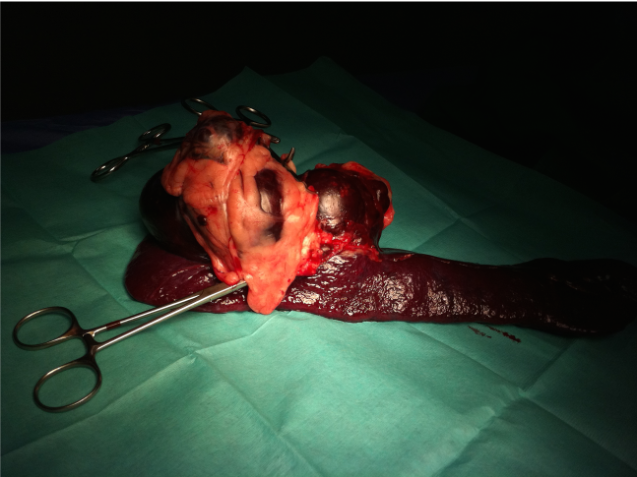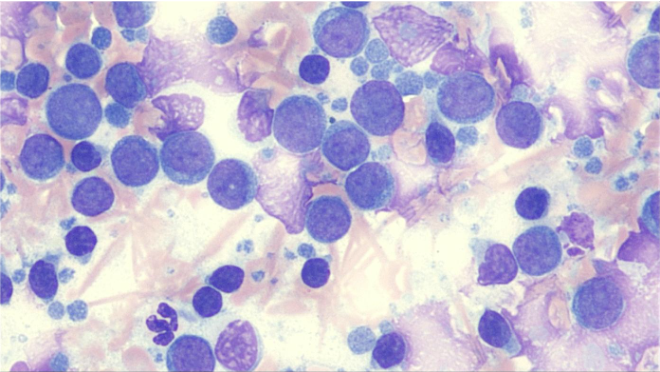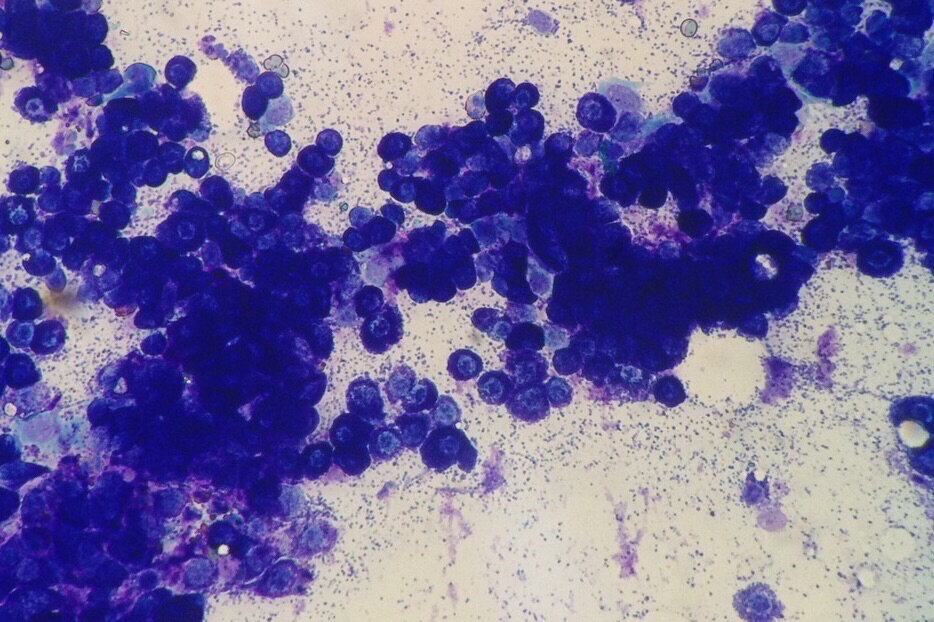Bleeding Splenic Mass. Should You Treat?
A dog presents to you as an emergency acutely collapsed. The dog is flat, has pale gums and a distended abdomen. You put the ultrasound probe on, and you find a splenic mass with free abdominal fluid. You suspect a bleeding splenic mass. The owner is distressed and waiting to speak with you? What are you going to say and recommend?
As a vet, you will be faced with a with an emergency bleeding splenic mass. In this situation, 2/3 will be diagnosed with malignant cancer, and 2/3 of those will be haemangiosarcoma. So what do you say to the owners? It is even humane to take the surgery if it is going to die from cancer shortly after surgery?
This can be a challenging situation, and I often get asked, what should I tell owners, and what should I do?
Here is a summary of how I approach this case:
1) Inform owners of the facts.
2) Let owners make their own informed decision.
Yes, most times, it is bad news. However, there are times where it can be benign, and dogs can be cured with surgery alone. I do not know until I have performed further diagnostics and removed the spleen to obtain a definitive diagnosis via histopathology. Even if it is an aggressive cancer, most dogs improve dramatically after splenectomy (i.e. surgery to remove the spleen) alone. Although some owners may decide they do not wish to extend their dog's life with follow-up medical therapies, most dogs will have an excellent quality of life, even if it is just for a short duration after surgery. I think it is essential to inform the owners of the facts and likelihoods (even if it is bad news) and let them make their own decision. In the end, if the owners decide they do not wish to pursue surgery or any form of therapy for whatever reason, then that is their decision and that’s completely okay!
So, what are the facts?
2/3 of bleeding splenic masses are malignant cancer.
2/3 of malignancies will be haemangiosarcoma.
1/3 are benign and can have a good outcome after surgery alone.
Overall, 40-50% of splenic masses are haemangiosarcoma.
Unfortunately, if this is the most common cancer (haemangiosarcoma), the prognosis is poor with median (average) survival times of 1 to 3 months with surgery alone and <10% of dogs alive one-year after splenectomy. However, adjuvant chemotherapy after surgery has reported median survival times of 3 to 9 months. Although this cancer is incurable, occasionally dogs live more than one year with this approach.
Most dogs will die from bleeding from recurrent or metastatic haemangiosarcoma.
Other malignant cancer differentials include splenic sarcoma, histiocytic sarcoma, osteosarcoma, lymphoma, mast cell tumour, and metastatic cancers (such as carcinoma). The prognosis and treatment recommended varies with the final diagnosis and extent of cancer spread within the body (i.e. metastasis).
Benign differentials that are often curative with surgery alone include haematoma, indolent lymphoma (i.e. splenic marginal zone lymphoma), benign nodular hyperplasia or lymphoid hyperplasia, extramedullary haematopoiesis. And yes, these benign lesions can occasionally present as an emergency bleeding splenic mass!
Occasionally, we are not dealing with a bleeding splenic mass, and the mass is originating from the liver. I think it is important to inform owners that their dog may have a liver mass, even if you are confident the mass is coming off the spleen. Even the most skilled sonographers have been stung!
Should I aspirate first or go straight to surgery?
I think aspirating the splenic mass is only indicated if it is going to change the owners' decision to treat and the dog is stable (i.e. not an actively bleeding splenic mass).
The risk of further bleeding has not been reported in dogs. Based on human data, there is a 0 to 2% risk of bleeding post splenic biopsy. The risk is likely to be higher for bleeding splenic masses. Also, in one study of 38 dogs with various splenic masses (of which 42.5% had a diagnosis of cancer), no complications were encountered.
The overall yield with fine-needle aspirate for cytology of splenic masses is about 40-50%. Although clinically, I feel it is less than this.
If a bleed occurs from sampling the spleen, you have no choice, but to take the dog straight to surgery or humanely euthanize.
Lymphoma = usually exfoliates well, but occasionally you miss the diagnosis.
Haemangiosarcoma = usually very bloody but occasionally you get a diagnosis.
Extramedullary haematopoiesis or nodular hyperplasia = you usually get blood or lymphocytes only, and you often cannot tell if it is lymphoma.
Metastasis = you can sometimes get unusual cancer cells such as mast cell, so you need to check for cancer elsewhere.
Moreover, some aspirates will look benign but are malignant cancers!
Do you have any other tips?
If you do not feel comfortable using an ultrasound probe, that's fine. You can take x-rays. However, I encourage you to give it a go and practice more ultrasound. The more you practice, the better you will become.
Follow-up on your cases (even if you work in emergency only). This will make you a better vet.
Do not be shy to ask for advice about your final results, even if the cancer results you have sounds very aggressive and you feel there is no hope.
Not all haemangiosarcomas have a honeycomb or heterogeneous appearance on ultrasound.
If you get the diagnosis wrong, that's okay. We are all human, and you can learn from it.
Lastly, do not forget to take three-view chest x-rays to check for any evidence of metastasis, and check the dog's platelets, haematocrit and coagulation profiles before surgery! I also recommend performing haematology and serum biochemistry just before surgery to ensure the dog is otherwise healthy and has no other comorbidities.
Have you ever had a dog live for more than one year after a diagnosis of splenic haemangiosarcoma?
Yes. Check out 'Boof' on my 'Gallery' by 'clicking here'.
And although it is uncommon, I have also seen dogs with macroscopic metastasis from splenic haemangiosarcoma, splenic sarcoma and other aggressive cancer, live beyond one year with therapy.
Vets, I hope the information provided here is helpful. If you have a question about this topic or an unusual cancer diagnosis in the spleen, please do not hesitate to get in touch by 'clicking here'.
MINI QUIZ - What is your diagnosis?
Three different cytology slides of the spleen.
For each cytology slide, what cancer do you think this is?
Click through to look at the slides.
Click the button below for answers.




